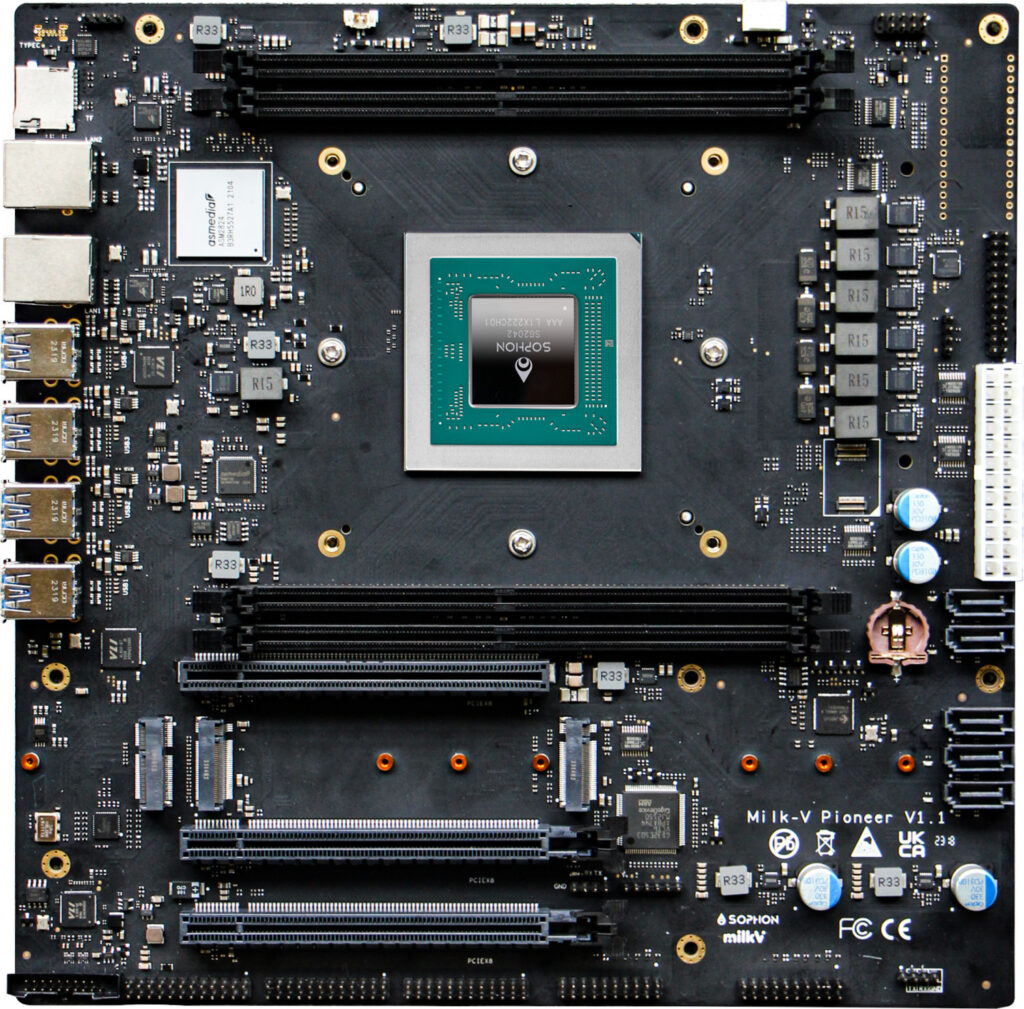With the release of the Jupiter, Milk-V has taken a big step in making RISC-V processors available to more people. With the impending release of the Jupiter motherboard, Milk-V, a well-known supplier of microcontrollers and RISC-V devices, hopes to democratize access to RISC-V architecture.
Central to the Milk-V Jupiter is the SpacemiT K1 or M1 processor, featuring eight SpacemiT X60 CPU cores. Specifications for these processors vary, but they generally operate between 1.6 GHz and 2.4 GHz. Both variants integrate 819 MHz Imagination BXE-2-32 graphics with Vulkan 1.3 and OpenCL 3.0 support, boasting 2 TOPS of AI performance.
In terms of memory, the Jupiter offers configurations with 4GB, 8GB, or 16GB of LPDDR4X soldered memory. Storage options include support for M.2 drives up to the 2280 form factor on a PCIe 2.0 bus, which limits speeds to 500 MB/s, along with a microSD reader and an eMMC connector. Additional connectivity is facilitated through a PCIe 2.0 x8 slot, accommodating expansions such as slower graphics cards or more storage.
Designed in a standard 170 x 170mm mini-ITX form factor, the Jupiter motherboard includes essential I/O interfaces necessary for building a functional system. These include 2x USB 3.0 ports, 2x USB 2.0 ports, standard front panel connectors, ATX 24-pin power support, SATA power connectors, and PWM fan headers. Notably absent are RGB headers, which might disappoint some enthusiasts given the board’s intended demographic.
The rear-panel I/O configuration includes:
- 1 x USB 2.0 Type-C
- 2 x USB 3.0 Type-A ports
- 2 x USB 2.0 Type-A ports
- 1 x HDMI (supporting up to 1920 x 1440 pixels @ 60 Hz)
- 2 x Gigabit Ethernet ports
- 1 x 3.5mm headphone jack
- 1 x 3.5mm microphone jack
- 1 x 12V DC power input
The Jupiter, which Milk-V introduced, is an example of an unorthodox strategy for RISC-V’s mainstream computer popularization. The board might not be suitable for typical Windows or macOS users, even though it only supports Ubuntu and Fedora Linux systems natively. The Jupiter has appeal for hobbyists interested in using it as a NAS device even with its moderate CPU performance ratings of 2 TOPS and 50 kDMIPS, which aren’t revolutionary by industry standards. This is especially true given its support for CASA OS.
Initially, Milk-V plans to ship the Jupiter primarily to China, with broader availability, including the United States and other global markets, slated to commence in the first week of July. Enthusiasts within the RISC-V community, however, are eagerly awaiting the release of Milk-V’s Oasis, another upcoming mini-ITX product promising significantly enhanced performance compared to the Jupiter.
RISC-V’s growing presence in the tech landscape owes much to the burgeoning AI sector and the ongoing success of Arm-based processors. This steady expansion continues to attract enthusiasts and professionals alike who favor low-power computing solutions and seek alternatives to traditional x86 architectures.
Jupiter from Milk-V may not completely transform high-performance computing, but its release marks a significant turning point in the RISC-V community’s adoption of the technology. While the industry waits for more developments and widespread RISC-V acceptance, devices like as the Jupiter are essential in increasing the availability and adaptability of alternative computer architectures.
If you like the article please follow on THE UBJ.
